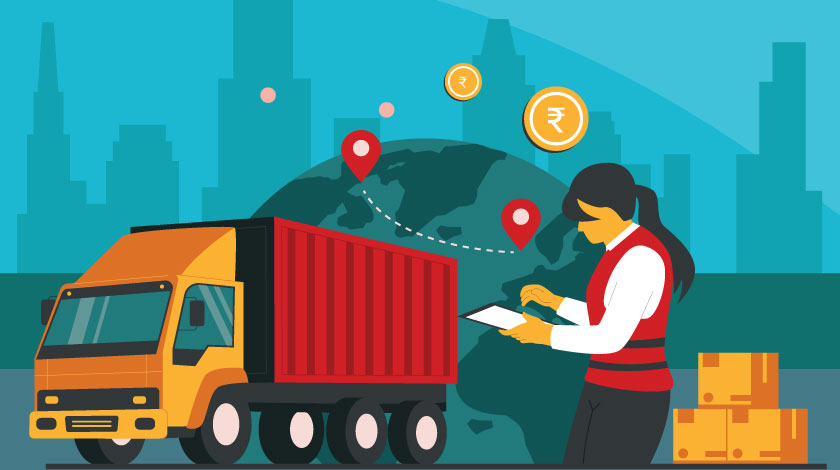
India’s logistics costs are among the highest in the world, consuming nearly 13-14% of the country’s GDP—almost double that of developed economies, which operate at 8% or below. The increasing cost presents a significant challenge for businesses across industries, impacting profitability, efficiency, and global competitiveness. High logistics costs arise due to multiple factors, including inefficient transportation networks, high fuel prices, poor infrastructure, regulatory challenges, and supply chain management inefficiencies. These costs affect manufacturers, exporters, importers, and retailers, leading to higher product prices and reduced market competitiveness.
Key Challenges Contributing to High Logistics Costs
- Inefficient Transportation Networks: Poor road, rail, and port connectivity increase transit times and fuel consumption.
- Fuel and Operational Costs: Rising fuel prices, shipping container cost, tolls, and labor costs significantly impact logistics transportation expenses.
- Infrastructure Bottlenecks: Inadequate warehousing, congested ports, and lack of multimodal transport integration lead to delays.
- Customs and Regulatory Delays: Lengthy customs clearance processes and regulatory compliance increase costs and reduce efficiency.
- Inventory Holding Costs: Poor demand forecasting and storage inefficiencies lead to excessive inventory carrying costs.
- Empty Container Repositioning: The imbalance in imports and exports results in higher costs for repositioning empty containers.
- Limited Use of Technology: Lack of digitalization, data, real-time tracking, and automation reduces operational efficiency.
Impact of High Logistics Costs
- Increased Product Prices: Higher transportation and storage costs are passed on to consumers.
- Reduced Profit Margins: Logistics companies struggle with cost control, impacting overall profitability.
- Inefficiencies in Supply Chain: Delays and disruptions lead to poor customer satisfaction.
- Competitive Disadvantage: Companies with high logistics costs struggle to compete in global markets.
Strategies to Reduce Logistics Costs
-
Adopting Technology Solutions
Implementing TMS (Transportation Management Systems) and WMS (Warehouse Management Systems) to Optimise operations.
-
Route Optimisation
Using AI and machine learning to identify the most efficient routes.
-
Collaborative Logistics
Sharing transportation resources with partners to reduce expenses.
-
Efficient Inventory Management
Employing just-in-time (JIT) techniques to minimize storage costs.
-
Sustainability Practices
Using electric or hybrid vehicles and Optimising packaging to cut costs.
-
Container ReUse
Lower logistics costs by eliminating unnecessary empty trips, enabling more efficient asset utilization and reducing fuel expenses.
Reducing logistics costs requires a combination of technology, strategic planning, and sustainable practices. By leveraging digital solutions and embracing logistics collaboration, logistics companies can achieve significant cost reductions while maintaining efficiency. At MatchLog, we specialize in reducing logistics costs and carbon emissions for our partners through container triangulation, aggregation, and technology-driven route Optimisation. By maximizing container cycles through reUse, companies not only cut operational overheads but also promote sustainability within the supply chain.
If you are ready to make not just the responsible but smart decision for your business then connect with us through email support@matchlog.delivery or contact us- 1-800-309-9887.

